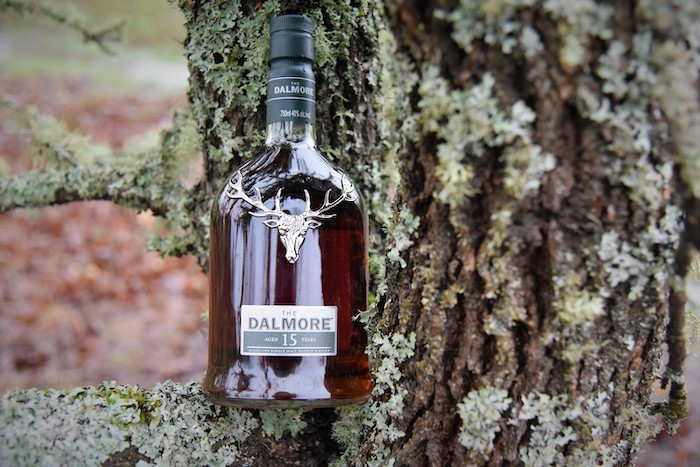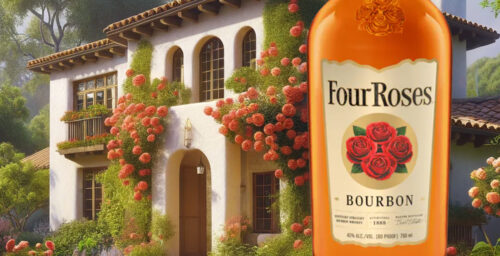Editor’s Note: This whisky was provided to us as a review sample by The Dalmore. This in no way, per our editorial policies, influenced the final outcome of this review. It should also be noted that by clicking the buy link towards the bottom of this review our site receives a small referral payment which helps to support, but not influence, our editorial and other costs.
The Dalmore Distillery is a longstanding institution in the Northern Highlands of Scotland, nestled rather picturesquely on the shores of the Cromarty Firth. Although the original owner, Alexander Matheson, opened the distillery in 1839 (with a mere two copper pot stills onsite) and first leased the site to the local Sunderland distilling family, the company changed hands and fell under the operation of Clan Mackenzie only 28 years later, in 1867, when Alexander, Charles, and Andrew Mackenzie took over from the Sunderlands.
This resulted in several significant changes during the ensuing years: in 1874 an additional two stills were built, doubling production. After Matheson died in 1891 the Mackenzies purchased the business in full. The most visible change accompanying this transfer of ownership, however, can be seen on every single bottle in the form of Clan Mackenzie’s stag symbol.
As the story goes, in 1263, Colin of Kintail, the Chief of Clan Mackenzie, saved the life of King Alexander III by stopping a charging stag which was intent on goring the monarch. He was granted in exchange the privilege of using for his own clan the royal stag emblem. This, naturally, is the very same emblem which now adorns every bottle of The Dalmore whisky.
Granted, there is no contemporary evidence confirming this story or, indeed, any undisputed historic Mackenzie lineage earlier than an Alexander Mackenzie (note that this is a separate Alexander Mackenzie than the one who purchased The Dalmore Distillery with his brothers, Charles and Andrew) who lived sometime during the first half of the 15th century. Yet I am happy to grant The Dalmore the benefit of the doubt, if only out of appreciation for a good story.
Nowadays The Dalmore Distillery has once more doubled its production capacity, housing a total of eight copper-pot stills onsite. Their brand was merged, however, with Whyte and Mackay a full six years prior to that expansion, and Whyte and Mackay has, in turn, changed hands multiple times since. Currently the company is owned by Vijay Mallya’s United Brands.
As for the whisky itself, The Dalmore Distillery has developed a unique identity over the years, a style of distilling that places a strong emphasis on cask selection. Almost every single whisky is aged in multiple sherry casks of varying varietals, with notably rich and complex results. This tactic has been in use for well over a century now, and much of its success can be attributed to the shrewd choice of establishing an exclusive arrangement with the González Byass winemakers during the distillery’s early years—a natural choice, considering that both were European family-run alcohol producers, and both had established those businesses relatively recently (1835 in the case of González Byass and, again, 1867 in the case of the Mackenzie Clan.)
Even so, partnering with such a fledgling group of wineries must have presented some level of risk. Happily, the risk paid off as the casks The Dalmore received—and continue to receive—from González Byass are now irrevocably tied to the whisky’s successful style.
The Dalmore 15-Year-Old Highland Single Malt Scotch Whisky is the culmination of that style. The whisky is matured in American white oak ex-bourbon casks, but the finishing is where it gets a bit more complicated. Multiple sherry casks are used, including an unspecified Amoroso as well as González Byass’ own Apostoles and Matusalem Oloroso sherries. Those latter two casks are, naturally, exclusively available to The Dalmore Distillery due to their longstanding relationship with González Byass.
One might expect such a strong sherry influence to impart too much sugar, but The Dalmore 15-Year-Old Highland Single Malt Scotch Whisky does not, after all, suffer for it. Rather, its sweetness is deep instead of cloying, and though the sherry casks are certainly noticeable, they support the ultra-smooth whisky, not distract from it.

Tasting Notes: The Dalmore 15-Year-Old
Vital Stats: Aged in American white oak bourbon barrels 15 years, then finished in a variety of sherry casks including unspecified Amoroso, González Byass Apostoles, and González Byass Matusalem Oloroso. 40% ABV. $140.00/750ml bottle.
Appearance: The amber-adjacent color of pure sugar caramel (as opposed to butter caramel.) High viscosity.
Nose: Straight away it is gently sweet and fruit-forward. As it opens up, notes of red grape skins, morning dew, brown sugar, vanilla, and lemongrass appear one after another.
Palate: The mouthful is exquisite, so soft on the gums and tongue as to nearly be unbelievable and leaving only the slightest tingle. Flavor notes include kiwi, mandarin orange, unfermented bread dough, and ginger. In addition, the residual flavors of the sherry casks are quite noticeable, yet restrained, sitting just under the whisky and providing a rich red fruit base which the other flavors build off of. Not a hint of peat or smokiness is present.









